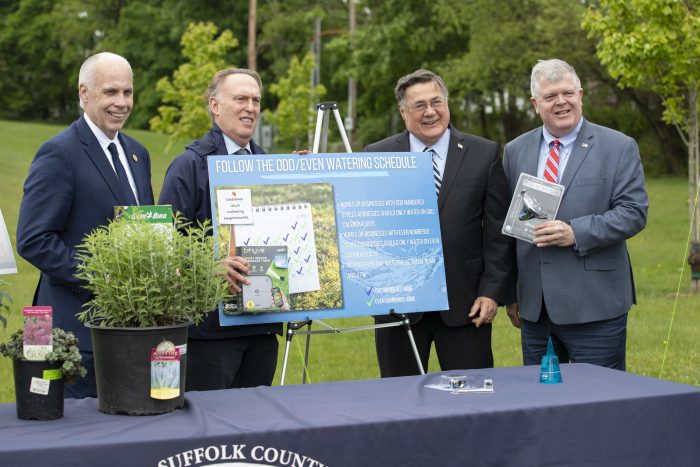By Ava Himmelsbach
The July 18 Town of Brookhaven Board meeting consisted of discussions regarding local concerns, happenings and authorizations.
The board reclassified certain local events as programs for public good. With the town as a co-sponsor, these events would qualify for coverage under the public good insurance.
Discussed as a potential program for public good was the Bethel Hobbs Community Farm Run the Farm event in Centereach.
“This would be Saturday, Aug. 10,” Councilman Neil Manzella (R-Selden) noted. “This is a fantastic event to help bring money and awareness back to the only farm in the 3rd District, I would say, and probably one of the only farms in the middle of the island like that. It is a fantastic farm, [and it] does a lot of [good] for the community, so come on and give a little back. Go on a nice 4-mile run — it’s very popular — [as] most runs are a 5K. This is actually a legitimate 4-mile run, [on] very hilly roads. It draws a huge crowd who partake in it, and we have a great time every year.”
The board voted unanimously to approve this classification for the farm. Manzella, along with the Bethel Hobbs Community Farm, has high hopes for this fun, summer event. He added that he will be playing a managing role in this gathering: “I will run the event, I will not run in the event. How’s that!”
The National Night Out event, scheduled for Tuesday, Aug. 6, was also considered an event for public good.
This night will consist of multiple free events across Brookhaven. Hosted by the town and Suffolk County Sheriff’s Department, this event will bring local law enforcement out to host activities and run various displays.
“They’re all convenient to every council district, and we hope that everybody chooses to participate in one,” Councilwoman Jane Bonner (R-Rocky Point) said. “It’s always a really fun family night, it really is.” The vote regarding the town’s sponsorship and insurance coverage for these events was unanimous.
The board also voted to accept $3,100 in funds donated to the town from the Three Village Dads Foundation for the Gerard Reggio Plaque. “I want to thank the Three Village Dads,” Supervisor Dan Panico (R) said. “That foundation is doing a lot of great work in the Town of Brookhaven, and also helping out Stony Brook Children’s Hospital quite a bit. It’s great work. If you’re watching and you are from Three Village Dads, we thank you.”
Other actions that were approved included the town’s sponsorship and classification of the Shakespeare in the Park and Suffolk County Youth Bureau Division’s Bilingual Drug and Alcohol Education, Prevention and Awareness Presentation events as programs for public good, along with the acceptance of a donation from Canvus of six benches made from recycled materials of wind turbines. These benches will be installed at various town facilities.
Despite decisions on approvals and authorizations involving property planning and contracts specific to local businesses, the popular topics for local families and individuals were largely relating to the town’s public good insurance coverage and classification of local events and happenings. As made clear by these talking points, Brookhaven residents have much to look forward to in the month of August.

















